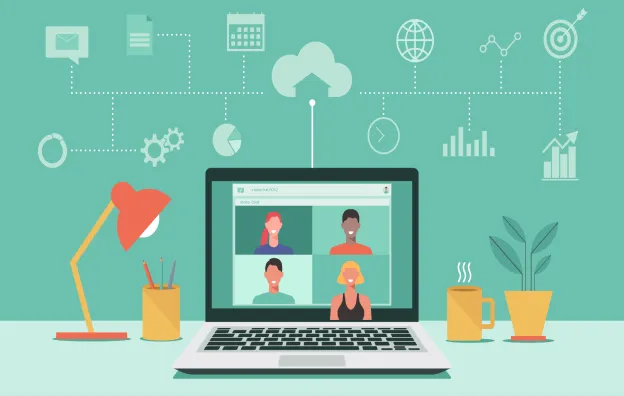
A pandemic hit. The country closed. We were advised to work from home and that is exactly what thousands of us, who still had work, did. Ikea ran out of home office desks. Broadband groaned under the pressure while slippers and pyjamas became office attire. Finally, the nation understood what the Green Party had been saying all along as the natural world blossomed with less traffic and a reduction in emissions. Our own transport costs plummeted as our commute became a short walk from the kitchen to the ‘office’ in the back bedroom. We embraced remote working. So much so, that many people have not returned to the Company buildings. Ireland has certainly embraced the move to remote working. It will be interesting to see if people will continue to work from home, choose to return to the office for some of the time or will there be a race back to full time working on site.
Working from Home or living in the Office?
There are negatives to remote working. Some people report not being able to wind down after the working day. Work can spill over into down time as the office remains open, on the same lap top, in the same room. Child care can be an issue as toddlers burst into Zoom calls with the latest booboo on the knee or just to say Hi! Cats can walk on keyboards and a great deal of discipline is needed when welcome visitors arrive during work hours. On the work front, getting quick answers to seemingly simple questions can be drawn out into games of Chinese whispers over messenger and emails where a quick face to face conversation might clear up all outstanding problems in a flash. Financially speaking, the tax allowance is pretty paltry, considering the high cost of working from home. (Currently just €3.30 a day in tax credits for full time working from home) Internet charges, electricity will reflect the 24 hours surge as you move from office to home. Meanwhile back at the office, the company is paying for your coffee, tea, water, heat, light, pens, paper and even the loo rolls. Zoom, Hangouts, Microsoft Teams and Skype meetings are convenient but are also fraught with bad internet connections, people on mute, participants speaking over each other and all those disconcerting background noises of wardrobe doors closing. But the most difficult thing can be the isolation factor. A lack of interaction between colleagues can be detrimental to the team spirit. Collaborative work is difficult. Training in new staff can be very challenging and generally keeping the friendliness and camaraderie of working alongside one another is difficult when the staff team is scattered over four counties.
The upsides to Working remotely
Ah the positives are many! There’s ‘no commute’ time. There is no traffic jam time. There’s plenty of play my own music time. Throw away the high heels and the scratchy neck ties as the dress code is determined by what can be seen on a video call and what you feel comfortable wearing. Tea breaks can be had in the garden. Lunch breaks are a time to throw the washing on, feed the goldfish and spend time chatting to the ones you love and live with. Fuel costs are down. Fuel emissions are down and wear and tear on the car is lessened. Your work day may be better organised as early risers are able to begin working earlier in the day and vice versa for the night owls. That ‘chatty Cathy’ in the office is not around to distract you with incessant work and non-work related conversations. The Whitaker Institute and the Western Development Commission found that 85% of people surveyed for a recent report want to continue working remotely after the Covid-19 pandemic has passed. More than half of those surveyed said they had never worked remotely before and more than three-quarters would like to continue remote working either some or all of the time after it ends. Only 12% indicated that they would like to work remotely on a daily basis, while 42% said they would like to work from home several times a week. This may well be the way forward as we change our work practices to a more blended home/office balance.
Blended may be best
Future working conditions may reveal a very changed world as many Irish companies and their employees rethink the benefits of a blended work/home balance. Prof. Alma McCarthy of NUI Galway said: “Productivity does not necessarily correlate with presence in the workplace. What we do is more important than where we do it for many roles. A mind set change is needed by managers and employers in terms of managing work remotely. The crisis provided an opportunity for organisations and managers to rethink how we work.” There may be benefits as yet untold, for those who choose to work from home for at least part of their working lives. Ireland’s new coalition government have a proposal in the Programme for Government for the development of a national remote working policy to facilitate employees to work from home or from co-working spaces in rural areas. This plan includes tax breaks to make it more enticing for remote working. The National Broadband scheme will see improvements in internet access and speeds. We have already embraced the changes that were forced upon us and found them to have more benefits than we realised. Let’s take the best of remote working and the best of on-site employment and find a new way that suits us, our productivity, our wellbeing and the environment. If that means forgetting Zoom is on for your ‘no pants’ day at home or singing loudly and off-key in the office, well so be it. This is our New Normal.